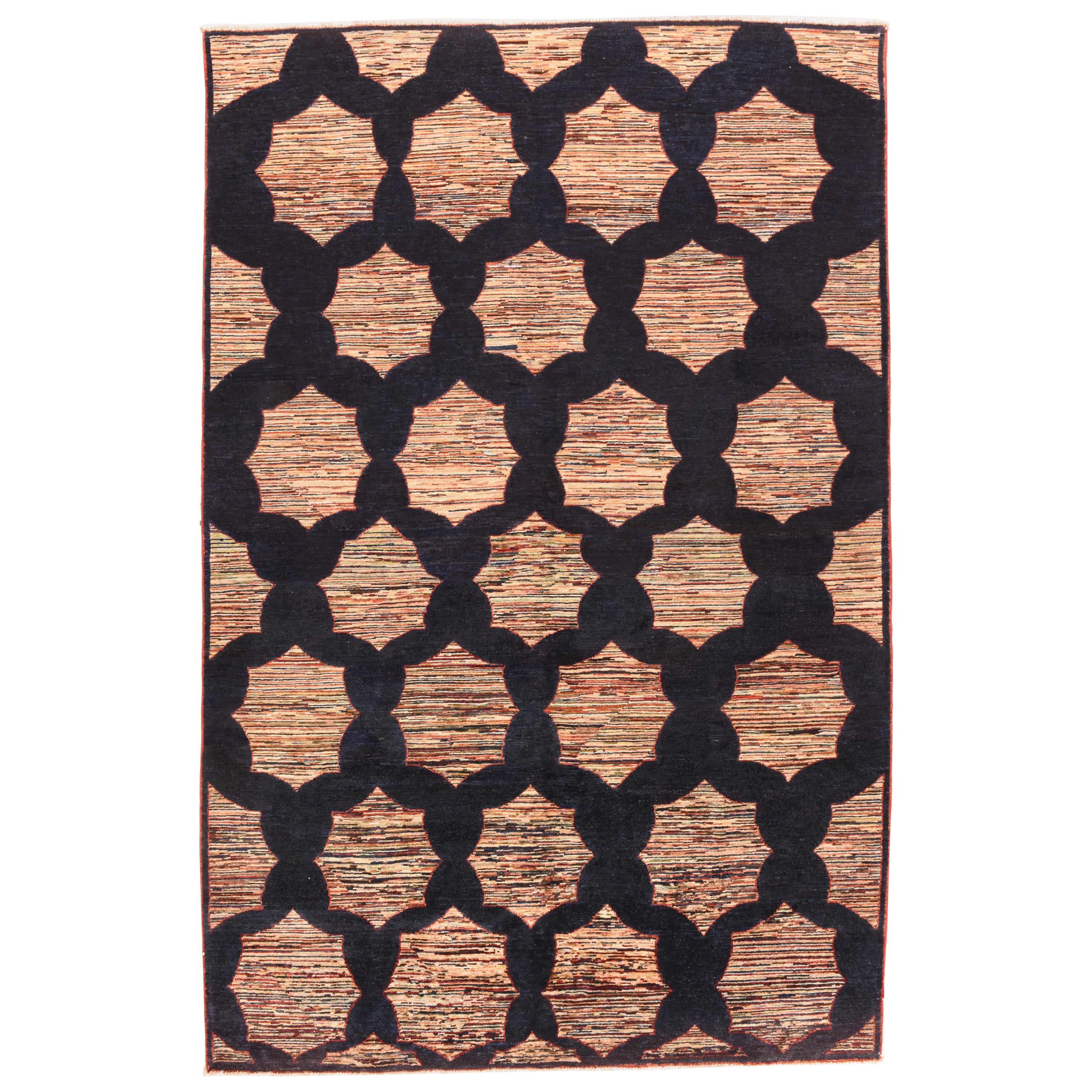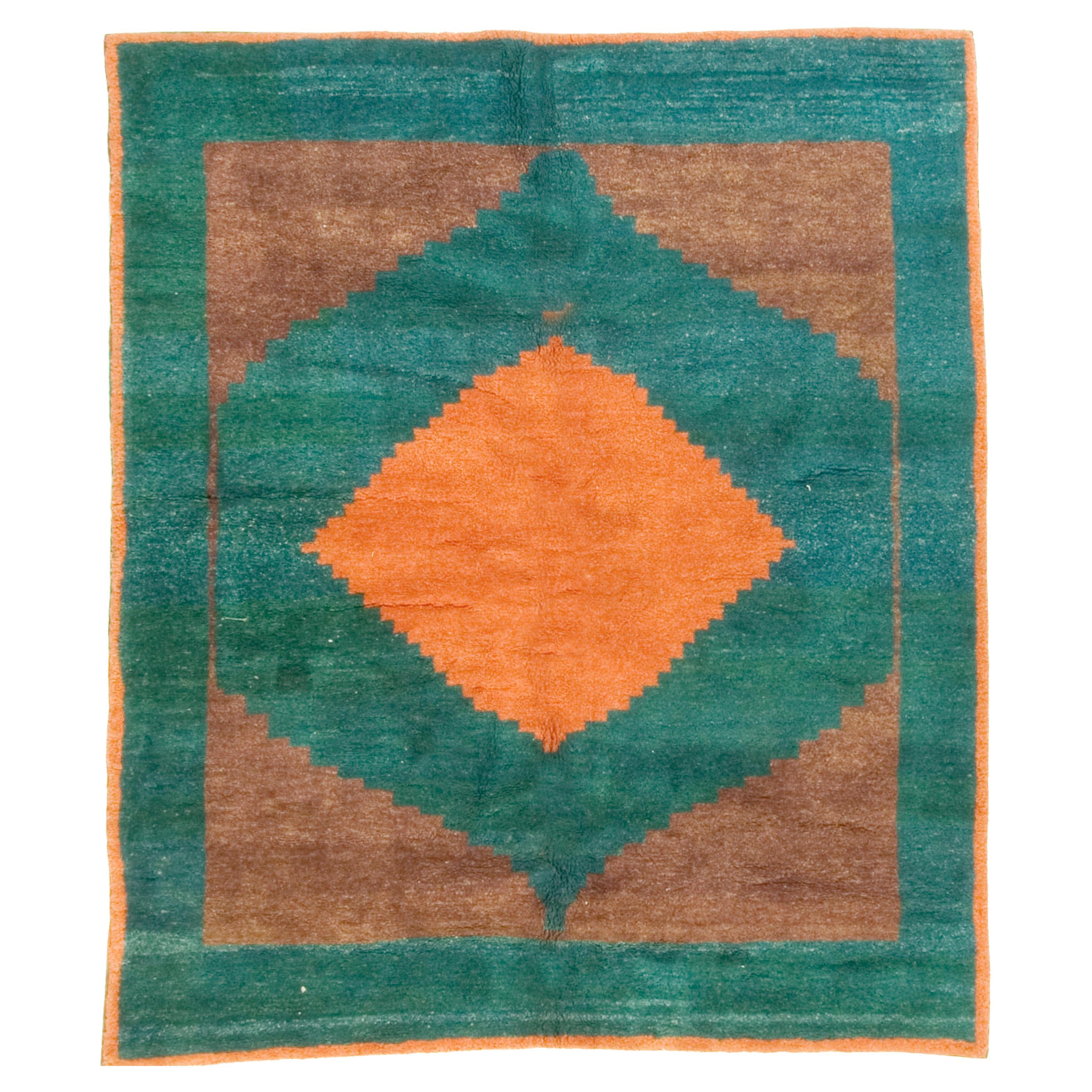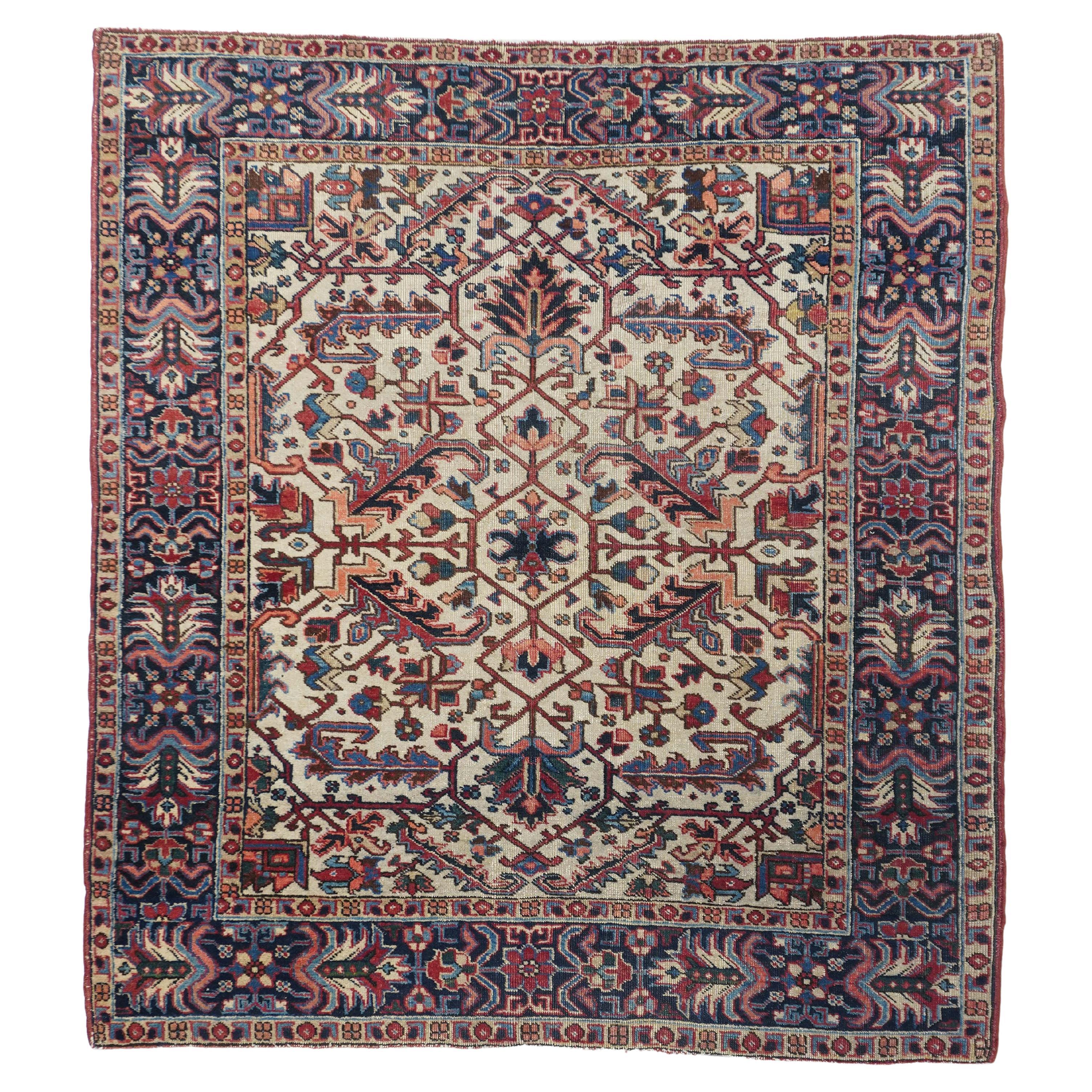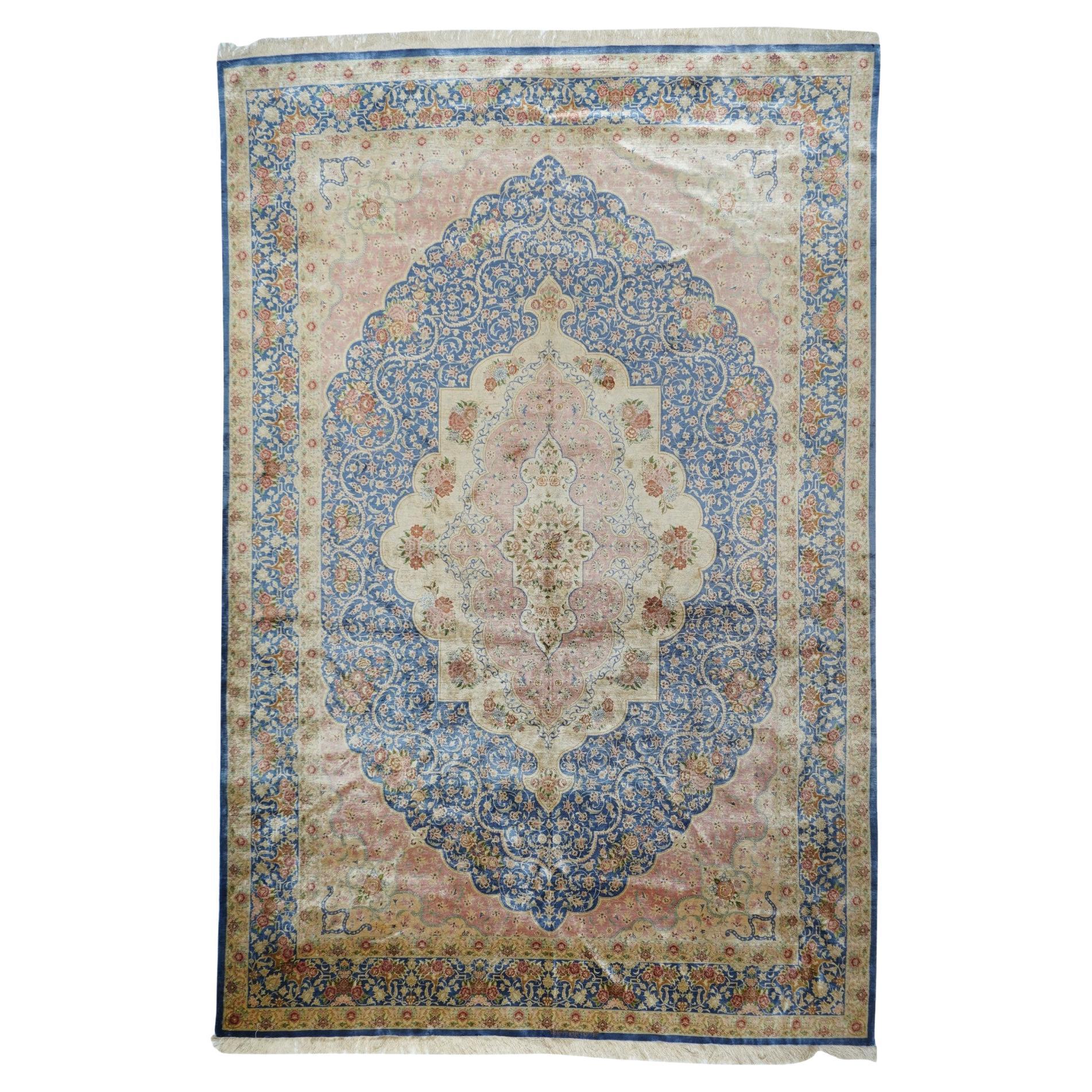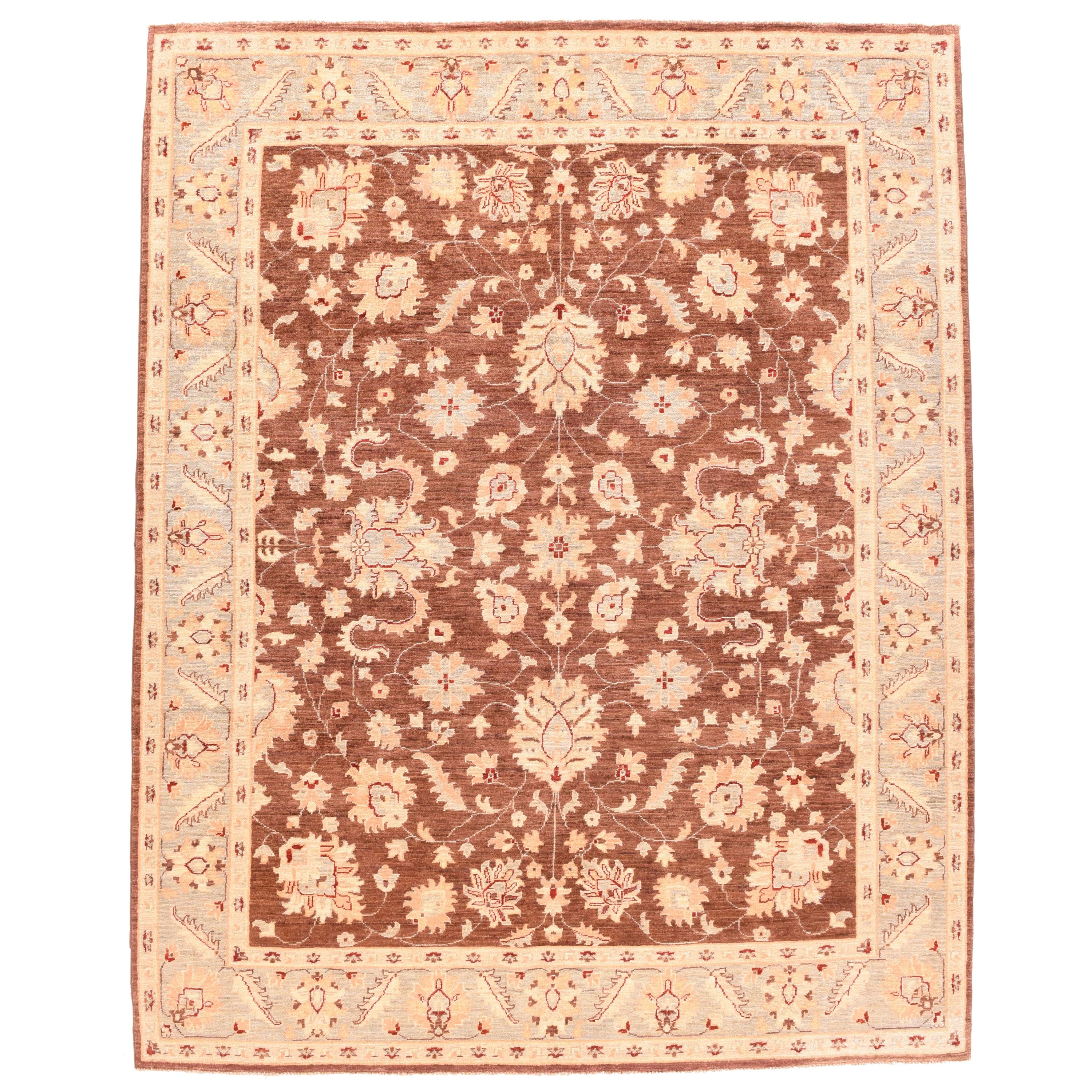Items Similar to Gabbeh Rug 6'5'' x 6'7''
Want more images or videos?
Request additional images or videos from the seller
1 of 11
Gabbeh Rug 6'5'' x 6'7''
About the Item
This Fars Province, SW Persian, rustic scatter shows an abrashed rust-red open field centred by a strongly abrashed light/cerulean blue octogramme enclosing a rosette and two primitive palmettes. Stepped corners in red, ecru, goldenrod and cerulean blue. Cream border with floating flowers and shrubs. Outer polychrome squares border. Moderate weave. Good condition. Measures: 6'5'' x 6'7''.
- Dimensions:Width: 77 in (195.58 cm)Length: 79 in (200.66 cm)
- Materials and Techniques:
- Place of Origin:
- Period:
- Date of Manufacture:1940
- Condition:
- Seller Location:New York, NY
- Reference Number:

About the Seller
4.6
Vetted Seller
These experienced sellers undergo a comprehensive evaluation by our team of in-house experts.
Established in 1916
1stDibs seller since 2019
93 sales on 1stDibs
Typical response time: 6 hours
- ShippingRetrieving quote...Ships From: New York, NY
- Return PolicyA return for this item may be initiated within 7 days of delivery.
More From This SellerView All
- Gabbeh Rug 6'7'' x 10'0"Located in New York, NYA Pakistani rug (Pak Persian Rug or Pakistani carpet) is a type of handmade floor-covering textile traditionally made in Pakistan A Pak Gabbeh is very similar in character to Persia...Category
20th Century Pakistani Tribal Central Asian Rugs
MaterialsCotton, Wool
- Heriz Rug 5'7'' x 6'5''Located in New York, NYThe ivory field is centred around an open hexagon enclosing a ragged, symmetrized palmette, and with open diamond and palmette pendants. Twelve giant The navy strip style border sh...Category
Vintage 1930s Persian Persian Rugs
MaterialsWool, Cotton
- Qum Rug 6'5'' x 9'8''Located in New York, NYThe crisp blue sub-field shows a medallion-conforming meander dividing the small flower-decorated ground. The stepped and part-scalloped ecru medallion features rose bouquets and a c...Category
Vintage 1970s Persian Persian Rugs
MaterialsSilk
- Peshawar Rug 6'7'' x 8'1''Located in New York, NYFine Peshawar Pakistan rug, hand knotted Design: Floral Peshawar is the capital of the Pakistani province of Khyber Pakhtunkhwa. Situated in the broa...Category
2010s Pakistani Other Central Asian Rugs
MaterialsWool
- Peshawar Rug 6'7'' x 10'3''Located in New York, NYFine Peshawar Pakistan rug, hand knotted Design: Floral Peshawar is the capital of the Pakistani province of Khyber Pakhtunkhwa. Situated in the broa...Category
2010s Other Central Asian Rugs
MaterialsWool
- Gabbeh RugLocated in New York, NYThis SW nomadic Qashghai scatter employs a clean, open abrashed red ground complemented by an abrashed red border of goats and herringbone plants. Plain sapphire...Category
Vintage 1950s Persian Persian Rugs
MaterialsWool
You May Also Like
- Vintage Gabbeh Rug 6'5 X 7'2Located in New York, NYVintage Gabbeh Rug 6'5 X 7'2. Gabbeh rugs in colorful, totally abstract styles, are a recent innovation and one of the best things to happen to the oriental rug in a long time. What ...Category
20th Century Persian Persian Rugs
MaterialsWool
- 1920s Antique Needlepoint Rug - 6'7'' X 6'5''Located in Los Angeles, USNeedlepoint rugs were created using the traditional needlework weaving technique that is used to make everyday items from furniture to carpets and artwork. However, it has a fascinating history both as a hobby and as an industry. When many people think of carpets, they think of pile carpets or flat weave kilims, but needlepoint has also been used to create beautiful carpets. These carpets are durable and an important part of carpet history. Archaeologists and scholars consider the roots of needlepoint to have been around 1500 BC. They consider the first needlepoint to include the fine diagonal stitches that were used to sew tents together by the ancient Egyptians. The art eventually evolved into tapestry weaving. However, a tapestry weaving differs significantly from needlepoint in that it uses a loom and vertical warp. Tapestry weaving is closer to the weaving of kilims and pile rugs than canvas work. However, some still include tapestry weaving in the category of needlepoint because of the fine work that appeared during the late Renaissance. It can have a similar appearance to the untrained eye. Technically, tapestry weaving and needlepoint are not the same, and they do not use the same technique. The first actual needlepoint rugs and needle-points began to appear in the late Renaissance. Needlepoint is worked by creating stitches on a stiff canvas. The canvas is typically made from jute or linen and is quite durable. Pieces from the Renaissance were used to cover footstools, chairs, pillows, bed headboards, and other furnishings. They were also used as table coverings and wall coverings. You could also find them on many small items such as purses, shoes, and various adornments for clothing. During the Renaissance, the craft reached a high level of skill, and the designs became incredibly detailed and realistic. They mimicked many of the subjects and styles of famous paintings of the time. They created florals, still life designs, scenes, and geometric tiled pieces. Some of them mimicked the designs found in Persian Carpets. Needlepoint reached its peak popularity in the 19th century when it was considered a proper occupation for a lady. Needlepoint and embroidery held a similar place in societal status at the time. During this time, the work became finer, with some of the canvas reaching a high level of detail. The level of detail is determined by counting the number of mesh in an inch. During this time petit point by French needlewomen could have a mesh count as high as 45 mesh. This allowed women to create highly intricate designs with incredible levels of detail. It is possible to find many antique pieces of needlepoint besides rugs. Needlepoint rugs were popular in France and Spain, where the technique was adapted to create highly intricate designs that mimicked the designs in architecture and fashion. They were popular because they were durable, and it could be fashioned into a variety of items. The canvases themselves were durable, and the wool that they used was also strong, which means that many of the pieces were able to withstand daily use. We have many artifacts that have survived from this time period. Needlepoint rugs are important collectibles because they are different from the pile rugs and kilims that are typically found on the market. Needlepoint carpets are special because they take many hours to create, especially larger works. Needlepoint pieces of any type became popular throughout Europe during the 19th century. It is still a popular hobby today, but perhaps one of the most interesting stories is that of the Portuguese needlewomen of Arraiolos. The story of these women and their beautiful carpets begins in 1492. Needlepoint was a popular occupation in Spain, which had a large population of Moors and Jews. They were an integral part of Spanish culture. However, in 1492, Queen Isabella of Spain issued a proclamation that gave these ethnic groups the order to pack their bags and board ships headed...Category
Vintage 1920s Other Russian and Scandinavian Rugs
MaterialsWool
- Gabbeh Rug, 1’ x 2’Located in New York, NYMeasuring 1’4” x 2,’ this Persian Gabbeh carpet is hand-knotted and belongs to the Orley Shabahang World Market Collection. Woven in Iran, the carpet’s traditional Persian weave provides a soft and plush pile while producing a durable foundation. The neutral cream and brown striations in the field originate from the natural tones of undyed handspun wool. The gold shades of the design are achieved using vegetable dyes, preferred for their vibrant shades and fade-resistant qualities. Characteristic among Gabbeh carpets is the two-dimensional design that represents the surrounding landscape of the weaver. In this example, the small golden boxes...Category
1990s Persian Tribal Persian Rugs
MaterialsWool
- Antique Serapi Rug, 4'8" x 6'5"Located in Evanston, ILSerapi (antique Heriz) rugs are to all intents and purposes a particular type or grade of what are called Heriz rugs more specifically the highest grade in terms of weave and very pr...Category
Early 20th Century Persian Heriz Serapi Persian Rugs
MaterialsWool
- Vintage Anatolian Rug, 3'6" x 6'5"Located in Norwalk, CTA hand-knotted Anatolian rug with a geometric design on a red field. Accents of beige, black and ivory throughout. This rug measures 3'6" x 6'5".Category
Vintage 1940s Persian Persian Rugs
MaterialsWool
- Gabbeh RugLocated in Chicago, ILA wonderful vintage Gabbeh rug with a wonderful all-over abrash crimson field with no border.Category
20th Century Persian Tribal Persian Rugs
MaterialsWool
Recently Viewed
View AllMore Ways To Browse
Floating Corner
Primitive Light
Mid Century Fiber Art Weaving
Nain Rugs Large
Camel Oriental Rug
Vintage Paisley Throw
Nain Large Rug
Vintage Heriz Large Rug
Vintage Heriz Large
9x12 Vintage Persian Rug
Western Kurdish
Bakshaish Runner
Bakshaish Rug Runner
Azerbaijan Rug Early 19th Century
Bidjar Navy
50s Rugs
Vintage Heriz Runner
Pale Antique Runners
